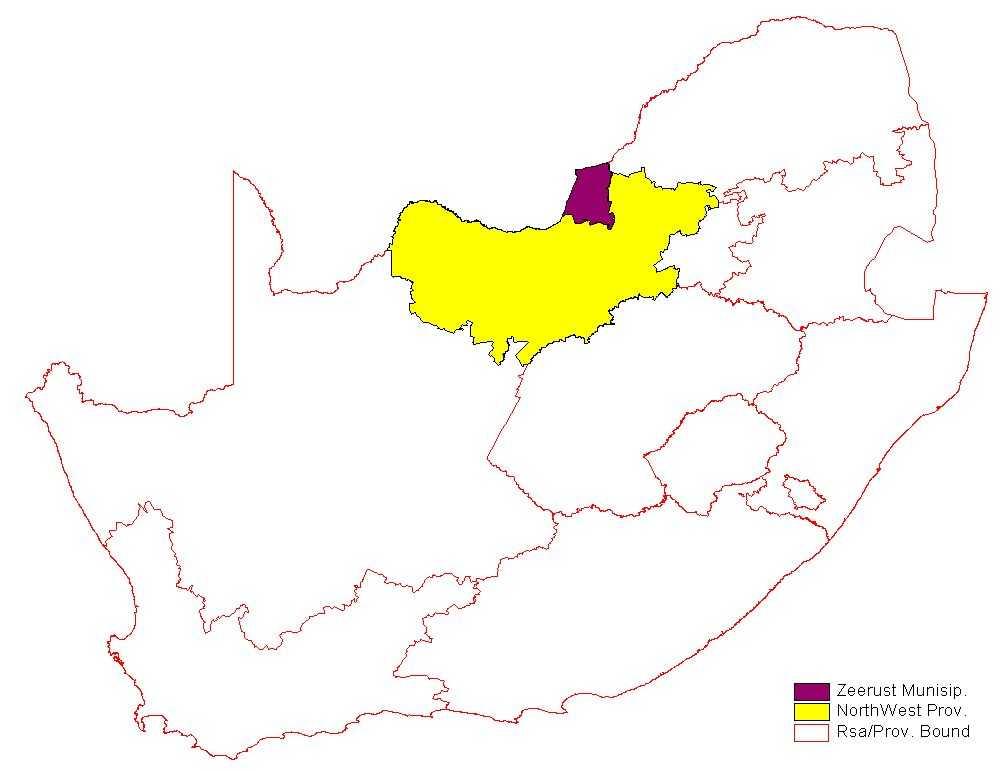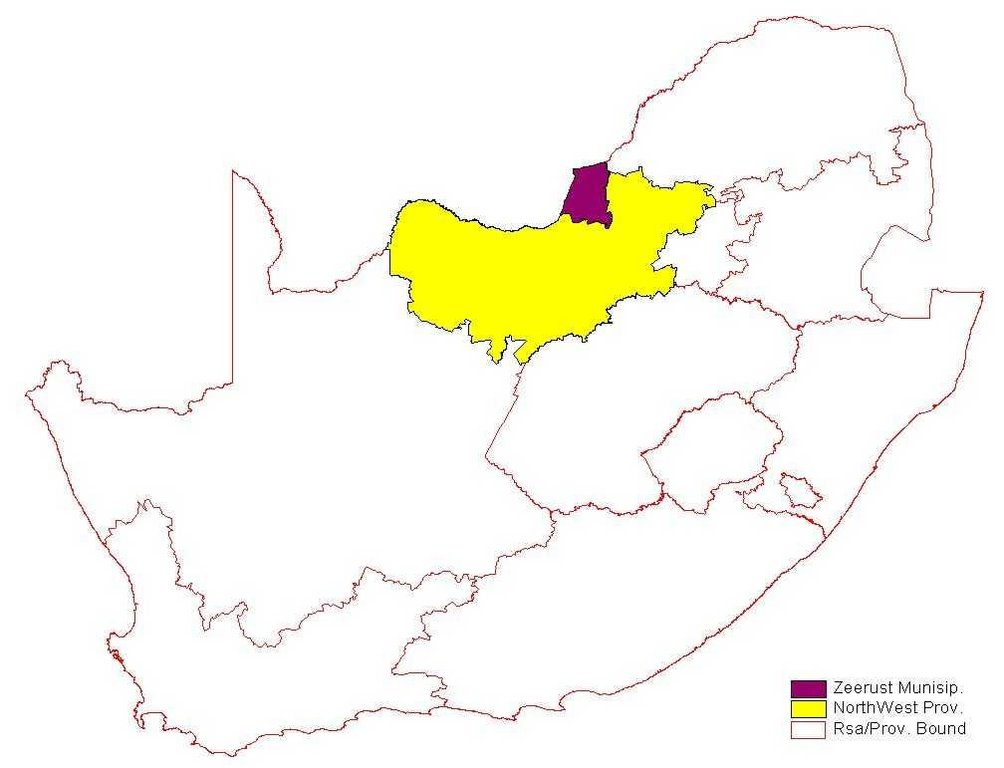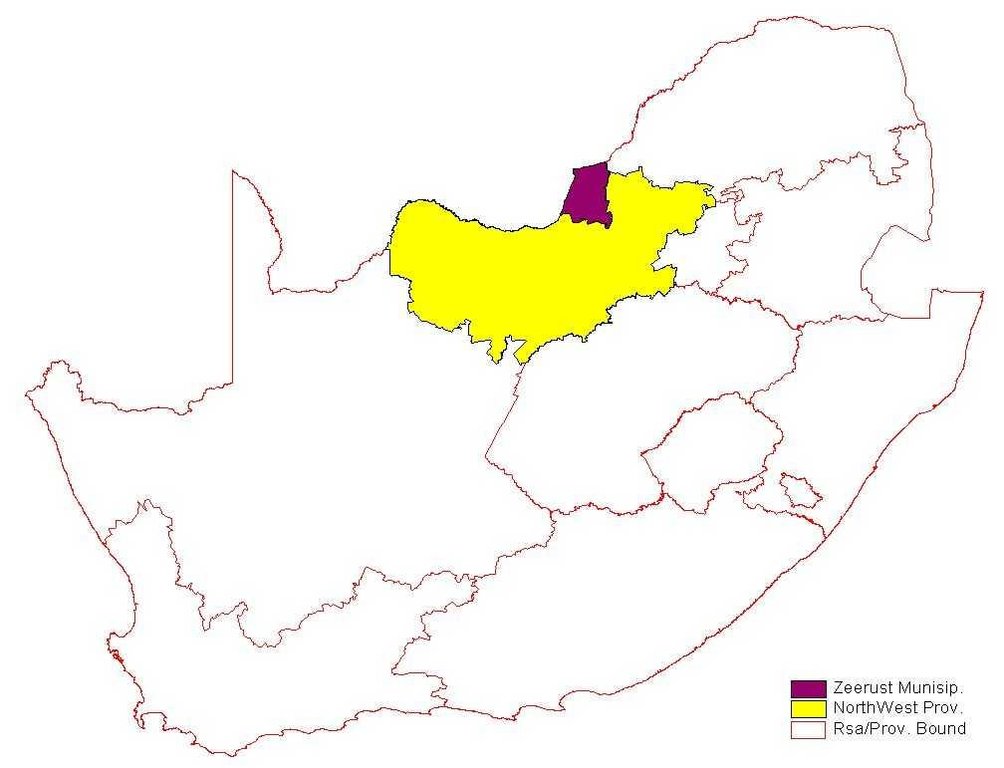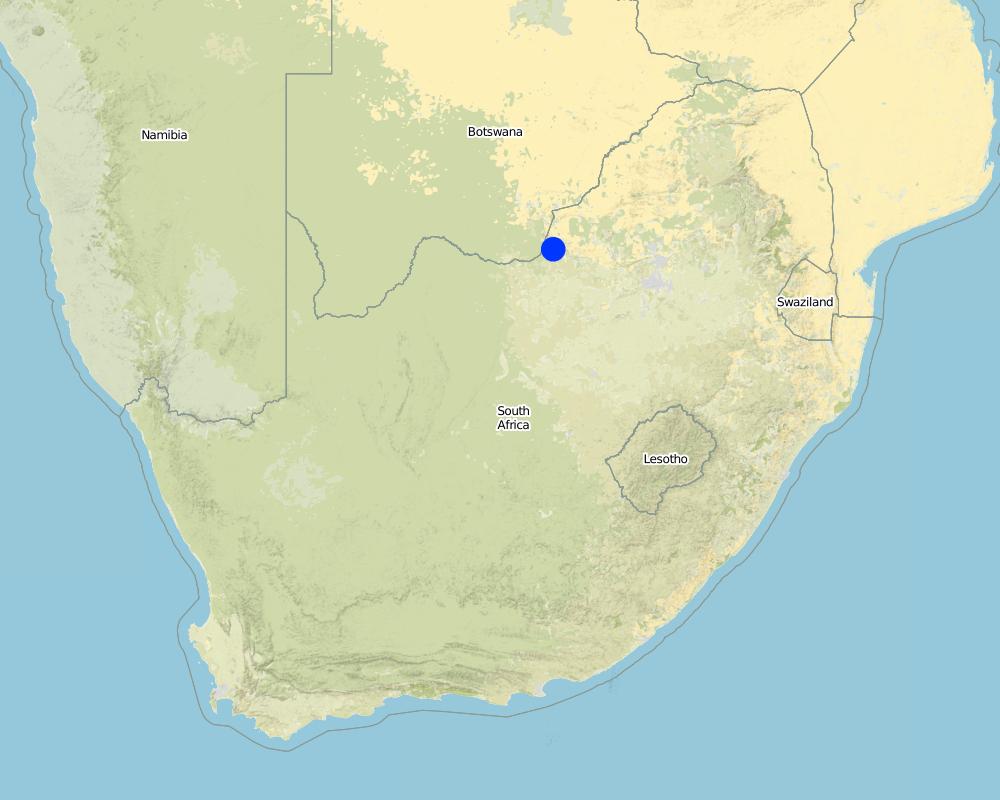Land user participation with research [南非]
- 创建:
- 更新:
- 编制者: Klaus Kellner
- 编辑者: –
- 审查者: Fabian Ottiger
approaches_2342 - 南非
查看章节
全部展开 全部收起1. 一般信息
1.2 参与方法评估和文件编制的资源人员和机构的联系方式
有助于对方法进行记录/评估的机构名称(如相关)
Potchefstroom Universiteit vir CHO (Potchefstroom Universiteit vir CHO) - 南非1.3 关于使用通过WOCAT记录的数据的条件
编制者和关键资源人员接受有关使用通过WOCAT记录数据的条件。:
是
1.4 SLM技术问卷的参考
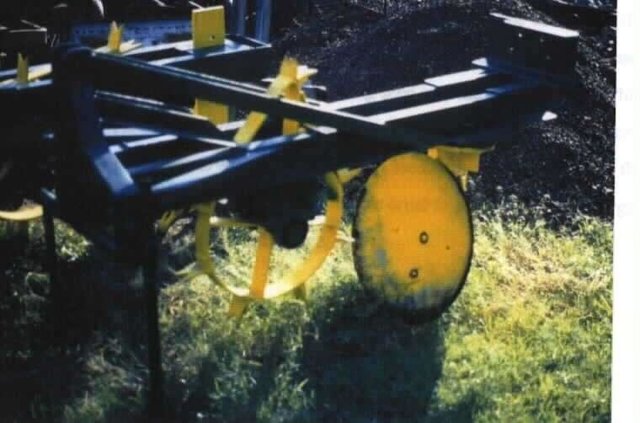
Agronomic & vegetative rehabilitation [南非]
Combinations; cultivation & vegetative
- 编制者: Klaus Kellner
2. SLM方法的描述
2.1 该方法的简要说明
Land user participation with researchers to improve existing and develop new technologies
2.2 该方法的详细说明
该方法的详细说明:
Aims / objectives: Land users implemented the technology but the success was never evaluated. Contacted researcher who quantitatively assessed the technology. The pros and cons of the technology were discussed with the land user and other farmers in the area. All gave comments and shared experiences of how these technologies can be improved. Adjustments were made and on an experimental and demonstrative way, the adjustments were implemented and evaluated.
2.3 该方法的照片
2.5 采用该方法的国家/地区/地点
国家:
南非
区域/州/省:
North West Province
Map
×2.6 该方法的开始和终止日期
注明开始年份:
1989
终止年份(若不再采用该方法):
2001
2.7 方法的类型
- 基于项目/方案
2.8 该方法的主要目的/目标
The Approach focused on SLM only
Radical veld improvement. Better grazing land. Understand degradation - causes and how to control it. Convey knowledge about restoration technologies to as many land users as possible
The SLM Approach addressed the following problems: Degrade & denuded rangeland Low production of grazing land
2.9 推动或妨碍实施本办法所适用的技术的条件
财务资源和服务的可用性/可得性
- 阻碍
Low cost/benefit ratio in the short term
Treatment through the SLM Approach: Proper advice to land user about advantages in the long term
法律框架(土地使用权、土地和水使用权)
- 启动
The existing land ownership, land use rights / water rights helped a little the approach implementation: hinder: low Privately owned commercial farms
了解SLM,获得技术支持
- 阻碍
No knowledge
Treatment through the SLM Approach: Awareness & technical support by agriculturists & scientists
3. 相关利益相关者的参与和角色
3.1 该方法涉及的利益相关者及其职责
- 当地土地使用者/当地社区
Farmers association: Mainly white.
Only men own the land. Commercially owned & managed land
- SLM专家/农业顾问
- 国家政府(规划者、决策者)
Department Agriculture & Resource conservation
- 国际组织
如果涉及多个利益相关者,请注明领导机构:
Land uses together with specialists
3.2 当地土地使用者/当地社区参与该方法的不同阶段
| 当地土地使用者/当地社区的参与 | 指定参与人员并描述活动 | |
|---|---|---|
| 启动/动机 | 互动 | Mainly:public meetings; partly: rapid/participatory rural appraisal; Land users approached researcher/scientist for help |
| 计划 | 互动 | Mainly: public meetings; partly: workshops/seminars; What & how to implement technology |
| 实施 | 互动 | responsibility for major steps; Did apply the technology on their own land |
| 监测/评估 | 互动 | measurements/observations; By scientist & students primarily but also with land users who helped |
| Research | 互动 | on-farm; On the farmers/land users owned land |
3.4 有关SLM技术选择的决策
具体说明谁有权决定选择要实施的技术:
- 主要是土地使用者,由SLM专家提供支持
解释:
land user driven (bottom-up). That technology be evaluated & improved
Decisions on the method of implementing the SLM Technology were made by mainly by land users supported by SLM specialists. consultative. Scientist & technician, land user
4. 技术支持、能力建设和知识管理
4.1 能力建设/培训
是否为土地使用者/其他利益相关者提供培训?:
是
明确受训人员:
- 土地使用者
- extensionists/trainers
培训形式:
- 农民对农民
- 示范区域
涵盖的主题:
Land users approached researcher/scientist for help on degradation; natural resources, utilisation & conservation, restoration, reclamation technologies
4.2 咨询服务
土地使用者有权使用咨询服务吗?:
是
指明是否提供了咨询服务:
- 在土地使用者的土地上
说明/注释:
Learning by doing & seeing is believing; Key elements: Demonstration, On site/farm, Participation; 1) Mainly: government's existing extension system, Partly: projects own extension structure and agent Extension staff: mainly government employees 3) Target groups for extension: land users, technicians/SWC specialists; Activities: Demonstration - participation
Advisory service is quite adequate to ensure the continuation of land conservation activities; Knowledge gained & understood
4.3 机构强化(组织发展)
是否通过这种方法建立或加强了机构?:
- 是,适度
具体说明机构的强化或建立程度:
- 本地
具体说明支持类型:
- 能力建设/培训
4.4 监测和评估
监测和评估是该方法的一部分吗?:
是
注释:
technical aspects were regular monitored through measurements
area treated aspects were regular monitored through measurements
no. of land users involved aspects were regular monitored through measurements;
There were few changes in the Approach as a result of monitoring and evaluation: First - demonstration & awareness Second - implementation & training
4.5 研究
研究是该方法的一部分吗?
是
明确话题:
- 生态学
提供进一步的细节,并指出是谁做的研究:
Research for better or adjustment of existing reclamation technologies - based in ecology
Research was carried out on-farm
5. 融资和外部物质支持
5.1 该方法中SLM组成部分的年度预算
如果不知道准确的年度预算,请给出一个范围:
- 2,000-10,000
注释(例如主要的资助来源/主要捐助者):
Approach costs were met by the following donors: local community / land user(s) (-): 40.0%; government (national): 40.0%; other (University): 20.0%
5.2 为土地使用者提供财政/物质支援
土地使用者是否获得实施该技术的财政/物质支持?:
是
5.3 对特定投入的补贴(包括劳动力)
- 农业
| 具体说明哪些投入得到了补贴 | 程度如何 | 对补贴做出具体说明 |
|---|---|---|
| 种子 | 部分融资 | |
如果土地使用者的劳动力是一项重要的投入,那么是不是:
- 自愿
注释:
By land owner
5.4 信用
是否根据SLM活动的方法给予信用值?:
否
6. 影响分析和结论性陈述
6.1 方法的影响
该方法是否帮助土地使用者实施和维护SLM技术?:
- 否
- 是,很少
- 是,中等
- 是,支持力度很大
Oversowing, cultivation, erosion & bush encroachment control
N/A
Did other land users / projects adopt the Approach?
- 否
- 是,很少
- 是,中等
- 是,支持力度很大
Results - to many other districts & land users by workshops, presentations at conferences, collaborations etc.
6.3 方法活动的可持续性
土地使用者能否维持通过该方法实施的措施(无外部支持的情况下)?:
- 是
若是,请说明如何维持:
Depending that guidelines about e.g. soil type, oversowing, bush encroachment eradication, cultivation technology etc. is applied correctly
6.4 该方法的长处/优点
| 土地使用者眼中的长处/优势/机会 |
|---|
| Learning by doing |
| 编制者或其他关键资源人员认为的长处/优势/机会 |
|---|
| On farm (How to sustain/ enhance this strength: Encouragement by researchers & technicians/extension) |
| Participation by land owners (How to sustain/ enhance this strength: Follow-up meetings & evaluation) |
| Farmer to farmer. Farmer to scientist. Scientist to farmer. Scientist to extension - farmer (How to sustain/ enhance this strength: Communication; on going support and show interest, continued evaluation & feed back) |
6.5 该方法的弱点/缺点以及克服它们的方法
| 土地使用者认为的弱点/缺点/风险 | 如何克服它们? |
|---|---|
| Too little communication between researchers, farmers & extension | Better participation & interest by all |
| 编制者或其他关键资源人员认为的弱点/缺点/风险 | 如何克服它们? |
|---|---|
| Not as many farmers involved as would have liked | |
| Farmers are scared to leave their farms & families alone to go to meetings & workshops, especially at night |
7. 参考和链接
7.1 方法/信息来源
- 实地考察、实地调查
- 与土地使用者的访谈
链接和模块
全部展开 全部收起链接

Agronomic & vegetative rehabilitation [南非]
Combinations; cultivation & vegetative
- 编制者: Klaus Kellner
模块
无模块


